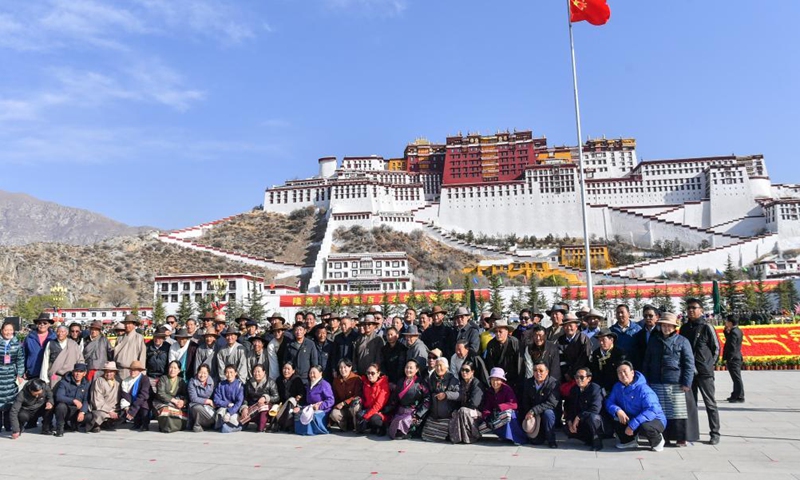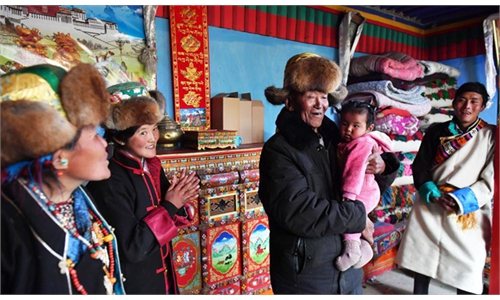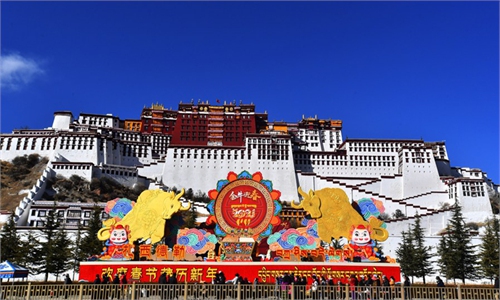Tibet celebrates 62nd anniversary of Serfs' Emancipation Day, hails poverty alleviation

People pose for a group photo to celebrate the Serfs' Emancipation Day at the square in front of the Potala Palace in Lhasa, capital of southwest China's Tibet Autonomous Region, March 28, 2021. (Xinhua)
Locals celebrated the Tibet Autonomous Region's 62nd anniversary of Serfs' Emancipation Day on Sunday as the region completes the building of a moderately prosperous society in all aspects.
Local residents and regional leaders hailed the poverty alleviation work led by the Communist Party of China (CPC), while vowing further progress on that path.
In a televised speech on Saturday, Qizhala, chairman of the regional government, said that, as a result of the CPC's poverty alleviation efforts, 3.5 million Tibetan people have been lifted out of poverty and into prosperity.
"In the past, democratic reform liberated 1 million serfs in Tibet, marking a historic leap in the social system. Now, with the poverty alleviation drive, the region's 3.5 million people are ushering in a moderately prosperous life. It is a historic leap in their way of life," Qizhala said
The regional chairman noted that the foundation for Tibet's development is more solid than ever, development opportunities are better than ever, and the momentum of development is stronger than ever.
The CPC led Tibetans to launch democratic reform on March 28, 1959, which abolished Tibet's feudal serfdom under a theocracy.
Over the past few days, Tibetans have participated in a variety of activities at various locations, including dances, performances and recitations, to celebrate their better lives.
Qamdo is the city where the first Chinese national flag was raised in Tibet. In recent years, the locals have developed grapes, apples, forestry and other commercial agricultural sectors.
With a planting area of more than 200 hectares, the city's grape industry is poised to create economic value of nearly 100 million yuan ($15 million) per year, with planters' average annual income of more than 20,000 yuan.
Zerin Wangdu, a Qamdo resident, said in a TV interview on Saturday that her family has experienced sweeping changes in recent years. "We eat and dress well now," she said. "Every day is cheerful in such an environment. We feel very happy."
Over the past 62 years, Tibet has undergone radical economic and social changes. The gross regional product grew from 174 million yuan in 1959 to more than 190 billion yuan in 2020, and the growth rates of per capita disposable incomes of urban and rural residents rank among the highest in the country.
In today's Tibet, railroads, airlines and highways are connected in all directions, and water, electricity and the internet have entered villages and households.
A number of regional epidemics have been eliminated and people in northern Tibet living at an altitude of more than 4,800 meters above sea level have been relocated through ecological relocation to extremely high altitude areas to get out of the "forbidden zone of life."
The average life expectancy in Tibet has increased from 35.5 years to 71.1 years.
Global Times


